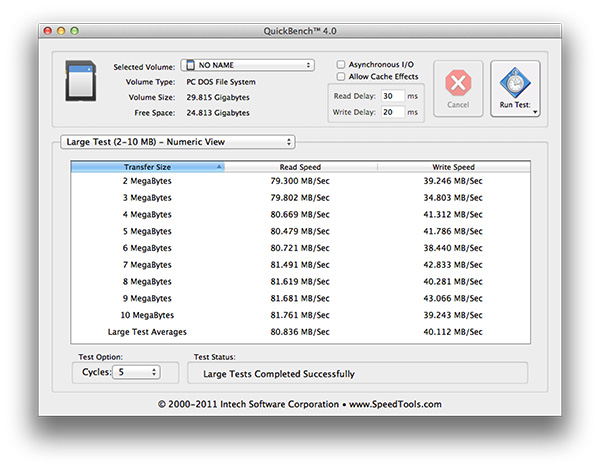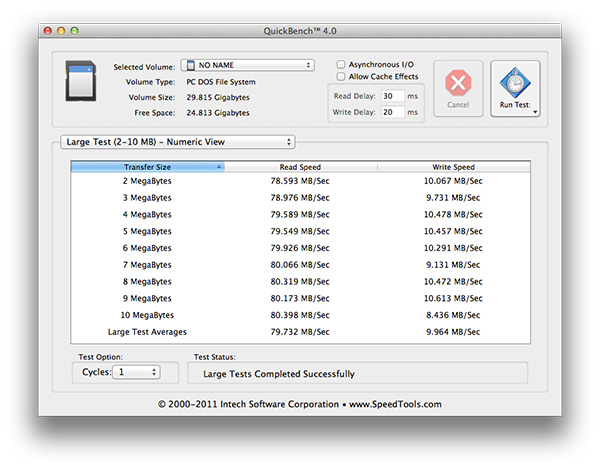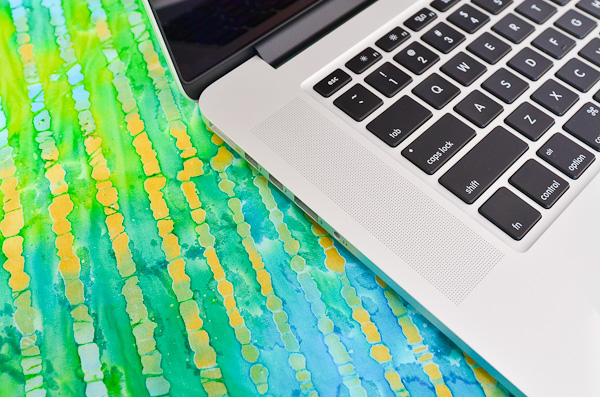The next-gen MacBook Pro with Retina Display Review
by Anand Lal Shimpi on June 23, 2012 4:14 AM EST- Posted in
- Mac
- Apple
- MacBook Pro
- Laptops
- Notebooks
WiFi Performance
The next-gen MacBook Pro is equipped with a decidedly this-gen wireless stack. In other words it uses the same 3x3:3 WiFi solution that was present in the 2011 MacBook Pro and is present in the non-Retina 2012 MacBook Pro as well: Broadcom’s BCM4331. The wireless behavior characteristics are a bit different since this is a physically different chassis, but we’re still dealing with a 3-stream 802.11n solution - not 802.11ac. All three antennas are located in the Retina Display’s housing.
We have seen Apple be conservative with component choices in the past. Deciding to stick with Samsung’s 45nm LP process for the A5X instead of embracing 32nm LP sooner with the 3rd gen iPad is one example that comes to mind. Like a good silicon company Apple appears to mitigate risk in design by sticking with known-good components wherever possible. Major changes to the industrial design are typically paired with comparatively minor silicon changes, and other components are kept as static as possible so long as they don’t overly compromise experience. While 802.11ac dongles and routers are just arriving today, Apple likely froze the Retina MBP’s wireless configuration quite a while ago. Rather than be caught shipping potentially unratified hardware, Apple went the safe route and stuck with 802.11n.

That’s not to say Apple’s wireless implementation is bad. The 15-inch MacBook Pro has been one of the best behaved notebooks on wireless that I’ve had the pleasure of using. The MacBook Pro with Retina Display is no different. Just like before, the best case negotiated physical rate is 450Mbps when paired with a 5GHz 3x3 access point. Unobstructed, within a couple of feet of the AP, I measured as much as 230Mbps to the Retina MacBook Pro. I tested at three different distances from the AP, through walls and on both 2.4GHz and 5GHz bands. Overall performance seemed comparable to the standard 15-inch MacBook Pro, although it’s definitely faster in some areas and slower in others.
| Location 1 | Location 2 | Location 3 | |
| 2011 MacBook Pro (2.4GHz) | 124.0 Mbps | 12.6 Mbps | 61.6 Mbps |
| Retina MacBook Pro (2.4GHz) | 117.9 Mbps | 87.6 Mbps | 44.0 Mbps |
| 2011 MacBook Pro (5GHz) | 186.8 Mbps | 154.6 Mbps | 24.7 Mbps |
| Retina MacBook Pro (5GHz) | 227.7 Mbps | 156.8 Mbps | 33.7 Mbps |
The second test location consistently performed poorly on the 2011 MBP, only on 2.4GHz however. For the most part there were no real surprises otherwise.
The SD Card Reader
It was our own Brian Klug who clued me into the horrible behavior of the 2011 MacBook Pro’s SD card reader. Depending on the SD card used, the integrated SD card reader either performed admirably or was the most frustrating part of the Mac experience. Out of the three SD cards I frequently use: a Patriot LX series card, a Transcend and a new UHS-I Patriot EP Pro, only the Transcend card actually works remotely well with the 2011 chassis. Even then, it’s not perfect. I usually have to insert and remove the card at least once before the reader will recognize it. The LX and EP Pro on the other hand are measurably worse. To get the EP Pro to work in the 2011 MBP’s reader I usually have to push the card in then apply upward or downward force to the exposed edge of the card to get it to read properly. Even then it’ll usually disappear from OS X or be present but read at bytes per second. I doubt this is the fault of the card itself but rather the latest example of incompatibility with the horrible SD card reader in last year’s MacBook Pro.
At least with the cards I’ve tested, the Retina MacBook Pro exhibits none of these issues. Over dozens of insertions I had no issues reading from or writing to all three of these cards, including the problematic ones. I ran a Quick Bench test on the EP Pro as it’s the fastest of the lot and came away with reasonable performance as well. Roughly 80MB/s reads and 40MB/s writes. The numbers are shy of Patriot’s 90/50 spec but quite good.
One of the times I was able to get the EP Pro working in the 2011 MacBook Pro I managed to squeeze in a single Quick Bench run. Read performance was almost identical at 80MB/s, but write performance was far lower at only 10MB/s:
Shortly after the test completed I could no longer write to the drive in the 2011 MBP so I suspect the card reader was acting up again. Needless to say, if you like using SD cards with your MacBook Pro the Retina Display model appears to be much better. That’s not to say there couldn’t be other incompatibilities, but in everything I tested it looks like this problem is finally fixed.
Better Speakers and Dual Mics
Apple is proud of its new speaker design in the Retina MacBook Pro. There’s not a whole lot you can do for tiny laptop speakers but despite shrinking the overall volume of the chassis, Apple has managed to deliver much better sound out of the new speakers in the rMBP. Like most of the upgrades to the next-gen MacBook Pro, you really need to do an A/B comparison to appreciate the difference. And keep your expectations in line with reality, a good set of external speakers are always going to sound better. With that said, the new speakers definitely deliver a fuller, more rich sound than their predecessor. You can still tell you’re listening to some form of integrated speakers, but now they sound distinctly less like they’re coming from a inside a notebook.
In preparation for Mountain Lion's arrival with dictation support, Apple outfitted the next-gen MacBook Pro with dual microphones in order to better focus on your spoken voice and not on background noise. In practice the new mics work reasonably well, rejecting moderate volume background noise. Loud music nearby will still cause interference and as always, accurate dictation requires more than just good quality source audio to get right.













471 Comments
View All Comments
wfolta - Sunday, June 24, 2012 - link
I insisted on a 17" laptop since the 17" MBP came out, and used them right up until I got the 15" rMBP last week. I'll never turn back. I've got it turned up to "1920x1200 equivalent" right now, and so I get as much screen real estate in a machine that's way, way, WAY smaller and lighter. And the display is so good, I'm impressed every single time I use it.At first, that seemed too small. I started with the 1440x900, and the next day tried the next denser step and it was okay, and the next day went 1920x1200 and it's something you get used to fairly easily. Obviously, you couldn't use 1920x1200 on a 6" screen if you had the pixel density to pull it off, but I really don't see the need for a 17" screen anymore.
(And I use a 30" screen at work, which this laptop could easily drive if that's what I want. Heck, I've read about people driving the internal screen, an HDMI screen, and two Thunderbolt screens with a video running on each simultaneously. You don't need a huge built-in screen.)
yvesluther - Sunday, June 24, 2012 - link
I am wondering how I should connect my two Thunderbolt displays to my new Retina MacBook Pro?a) Should I chain both displays and use one Thunderbolt port
or
b) Should I hook each display to its own port?
Thanks for any advice.
wfolta - Sunday, June 24, 2012 - link
I'm pretty sure you will have to put each display on its own port. You'll be able to daisy chain other devices (disk drives, etc), but I think it's one display each for this laptop at least.Constructor - Thursday, June 28, 2012 - link
The "classic" MBPs support both displays on the same TB port, so I would expect that to work here as well. It's mostly just a question of convenient cabling, since the displays have TB daisy-chaining outputs anyway.SJdead - Sunday, June 24, 2012 - link
One issue though is how can the "retina display" [(FYI, 226 PPI is not comparable to the human eye which at 20/20 vision is 426 PPI) that's why I don't like Apple because they treat people like their dumb.] is that there is so much focus on the PPI.Ya, it's innovative (in a sense) as Apple knows how to market to the masses. But what about LED - IPS? That's a downgrade from older IPS displays. What about color contrast? Blacks/whites? What about billions of colors instead of millions? What about color accuracy and Adobe sRBG/RGB? What about glossy screens that cause over-saturated colors? Response time in MS?
All the above mentioned are glaring oversights to the, "Best display I've ever seen..." comment. If that is the case, you should check out a variety of other displays.
My point is that display resolution isn't everything, there are a lot of other factors that go into a good display. There are far better displays from 5+ years ago that will outperform and look more gorgeous that Apple's current 2012 model. All you have to do is go to Apple's website to see that good specifications are highlighted while poor specifications are not even mentioned.
wfolta - Sunday, June 24, 2012 - link
You do realize that you can't make any statements at all about "retina" qualities based solely on PPI, right? "Retina display" is based on an angular measurement, so you need PPI at a specified viewing distance. And the rMBP meets that at its typical viewing distance.(On an anecdotal note, I work with video as a profession, so am very sensitive to pixels, etc, and this screen is gorgeous, density-wise.)
You mention all of those "far better" displays from 5+ years ago... Were they in laptops, or were they expensive desktop options? What manufacturer has continued to make them since then? In fact, most everyone except Apple has headed towards the consumerized, 16:9 1920x1080 (1080p) screen size, which is 15% shorter than Apple's displays. Contrary to popular opinion, Apple has been holding out for the more useful, professional aspect ratio and resolution, while its competitors have chased the checkbox of "Play Bluray DVDs at HD resolution".
In terms of your actual comments, the rMBP's display is in the top two or three laptop screens for contrast and blacks, basically falling a bit short (top 6-8) in white because Apple just couldn't pump up the brightness without compromising battery life too much. Color accuracy has dropped a bit from older MBP's. Still, the combination of perceivable features is the best most of us have ever seen outside of a calibrated desktop setup.
wfolta - Sunday, June 24, 2012 - link
One thing to think about is that Apple's auto-switching between dedicated GPU and Intel graphics is a bit of a mystery. Some programs trigger the dedicated GPU and it's not clear why.For example, Eaglefiler (a terrific program) seems to trigger it, even though it's not a graphics heavyweight and even when it's hidden. With a program that you leave running all the time like that, it will drag down your battery life. The author is looking into this, but it's not clear what Apple API is the cause.
In light of that, I'd highly recommend the gfxCardStatus, which monitors what programs trigger discrete graphics and which don't. It'll at least give you a clue that a program you wouldn't otherwise suspect may be shortening your battery life.
designerfx - Sunday, June 24, 2012 - link
okay, so we're looking at a screenshot. 15 FPS in the most uncluttered situations with D3. Can you even imagine the FPS in a normal situation during the game, even on normal difficulty?Hint: we're looking at FPS in the 1-3 range, maybe 4 if you're lucky.
Apple can deliver great displays but if we don't have performance to match then the only main use is photoshop.
Fx1 - Monday, June 25, 2012 - link
If you have any brains you will bootcamp windows and game in there with usually 40% increase in FPS. No one games in OSX. Even OSX fanboys have better sense.wfolta - Monday, June 25, 2012 - link
I've said repeatedly in this thread that I get 20+ FPS in Normal Act III, with two or three dozen mobs onscreen. I've read at least one other report of 20+ FPS (perhaps this article mentions that in the text). And this is with settings mostly at max. Cut the res down to 1440x900 and drop a few settings to Medium and I think you could double the frame rate.So your speculation is wrong.